In the realm of wildflowers native to Australia, the Thysanotus Tuberosus, commonly known as the Fringed Lily or Twining Fringe Lily, emerges as a delicate and captivating botanical treasure. With its graceful appearance, distinctive fringed petals, and intriguing growth habit, this wildflower has enamored botanists, nature enthusiasts, and those who seek to appreciate the subtleties of the natural world. In this article, we delve into the enchanting realm of Thysanotus Tuberosus, exploring its appearance, habitat, cultural significance, and the awe it inspires in those who encounter it.
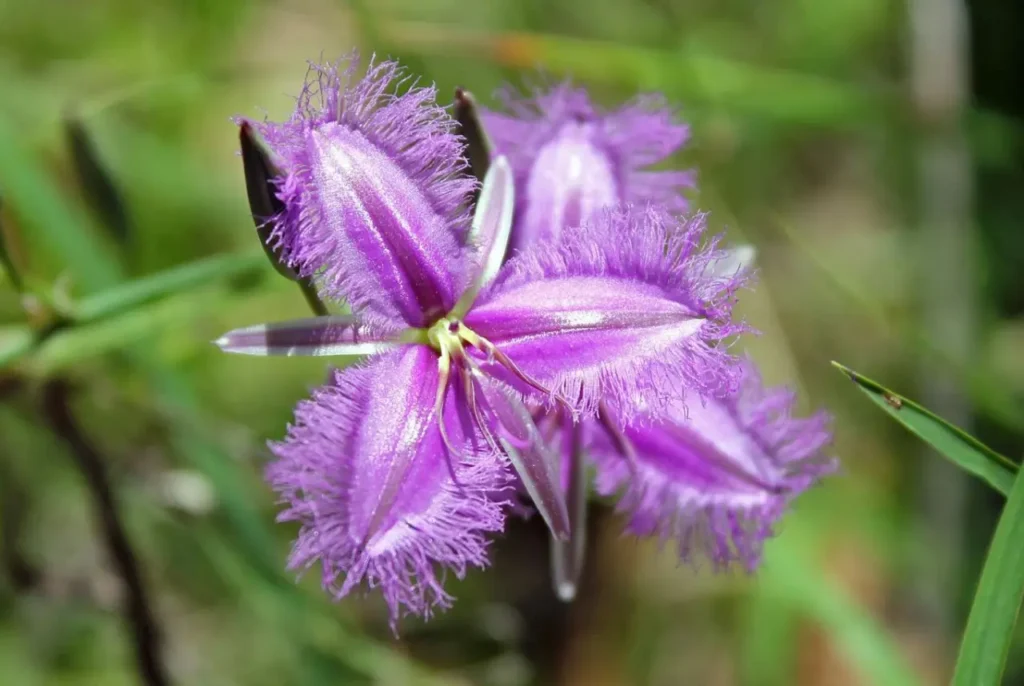
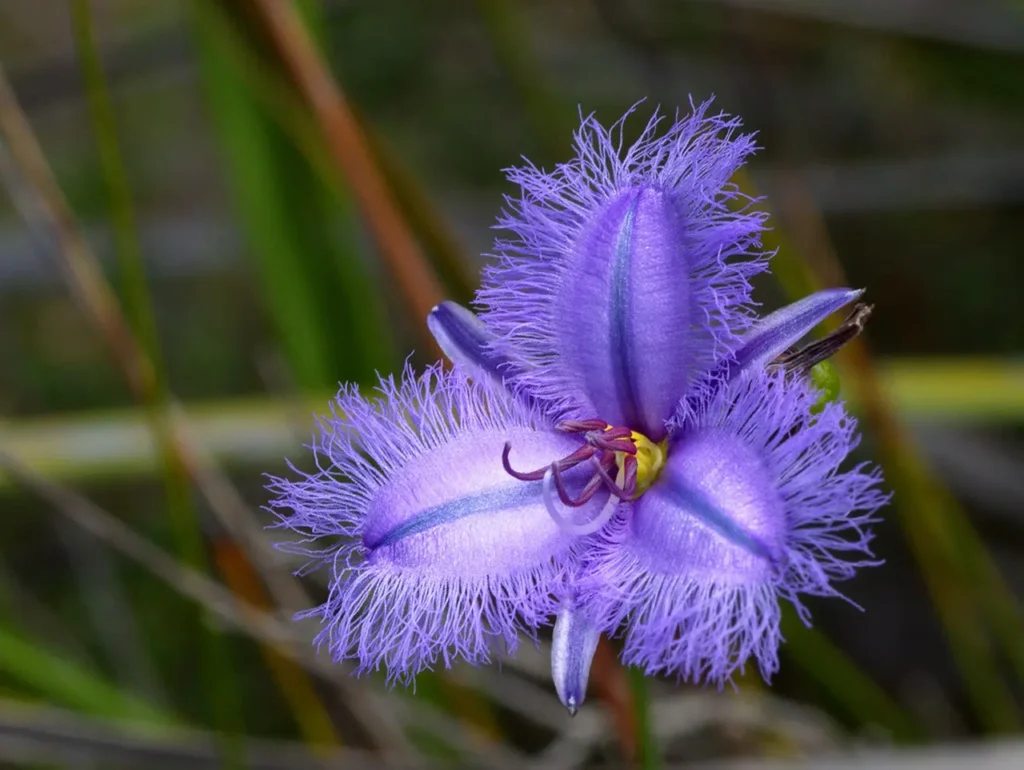
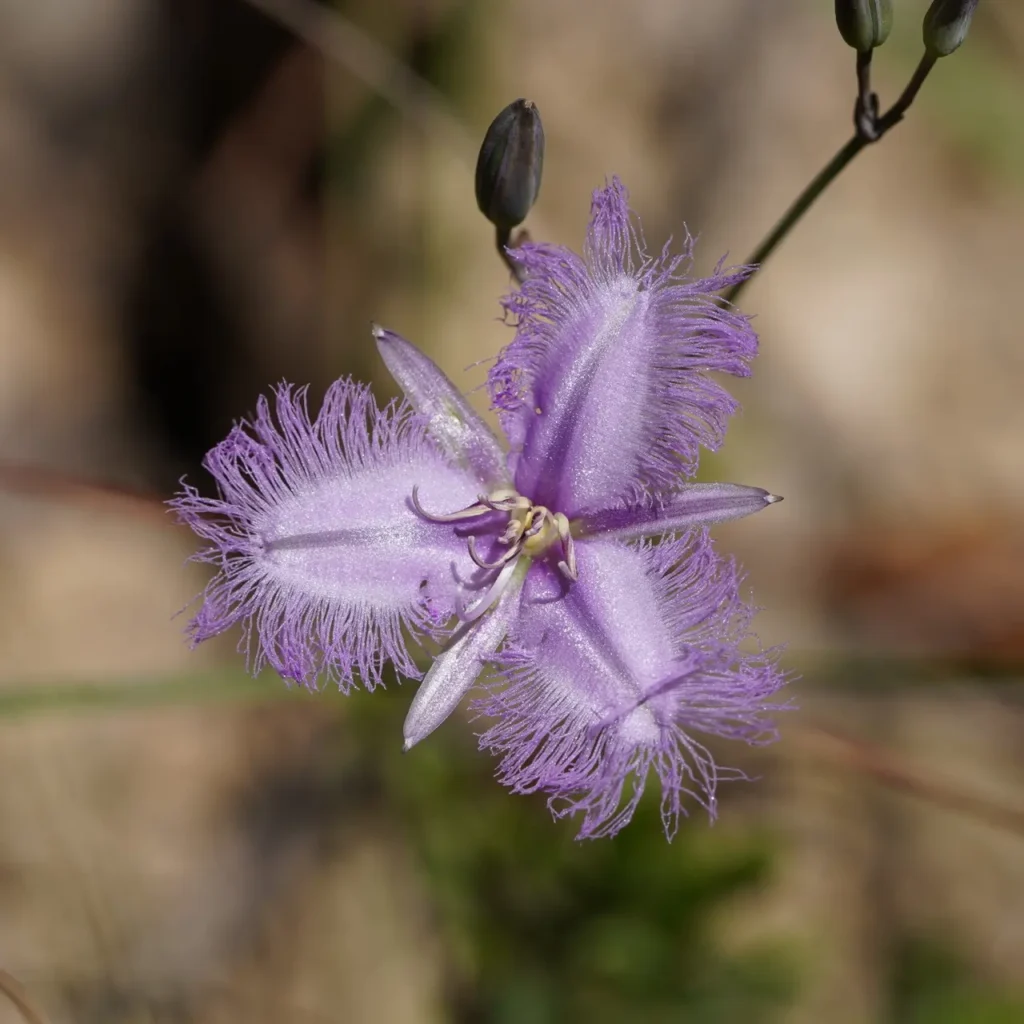
Appearance and Characteristics
Thysanotus Tuberosus belongs to the family Asparagaceae and is characterized by its unique growth pattern and intricate floral structure. This wildflower typically reaches a height of around 20 to 40 cm, with slender, twining stems that curl and spiral their way through the surrounding vegetation. The twining habit allows the Fringed Lily to find support and climb amidst grasses and other plants.
The flowers of Thysanotus Tuberosus are the true showstoppers. Delicate and exquisite, they showcase a bell-like structure with fringed, thread-like petals that give rise to the common name “Fringed Lily.” The petals can vary in color, ranging from pale lilac and blue to deep violet, often displaying a gradient effect that adds to their allure. The center of the flower holds a cluster of stamens and pistils, contributing to its intricate beauty.
Habitat and Range
Thysanotus Tuberosus is native to various regions of Australia, including parts of New South Wales, Victoria, and South Australia. It thrives in a range of habitats, from open woodlands to heathlands and coastal dunes. This adaptability to different environments contributes to its widespread distribution and availability for observation.
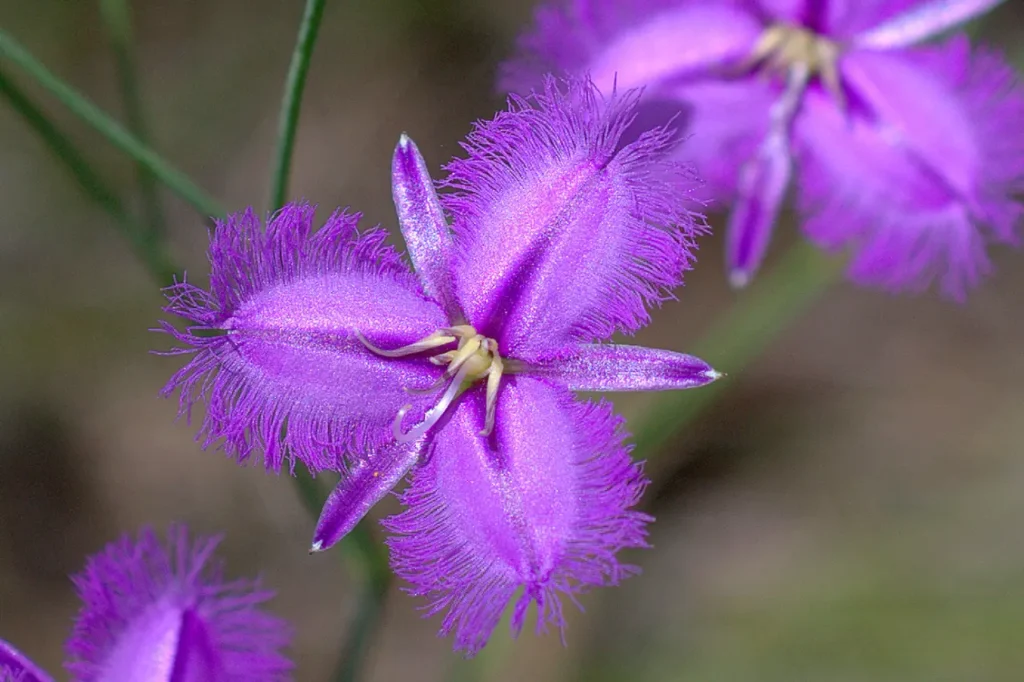
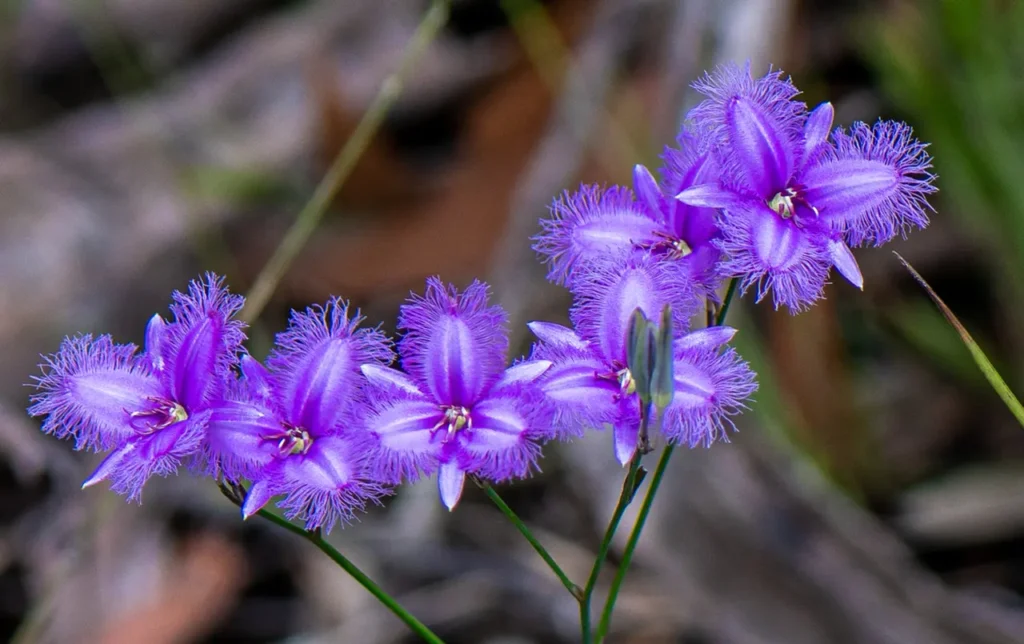
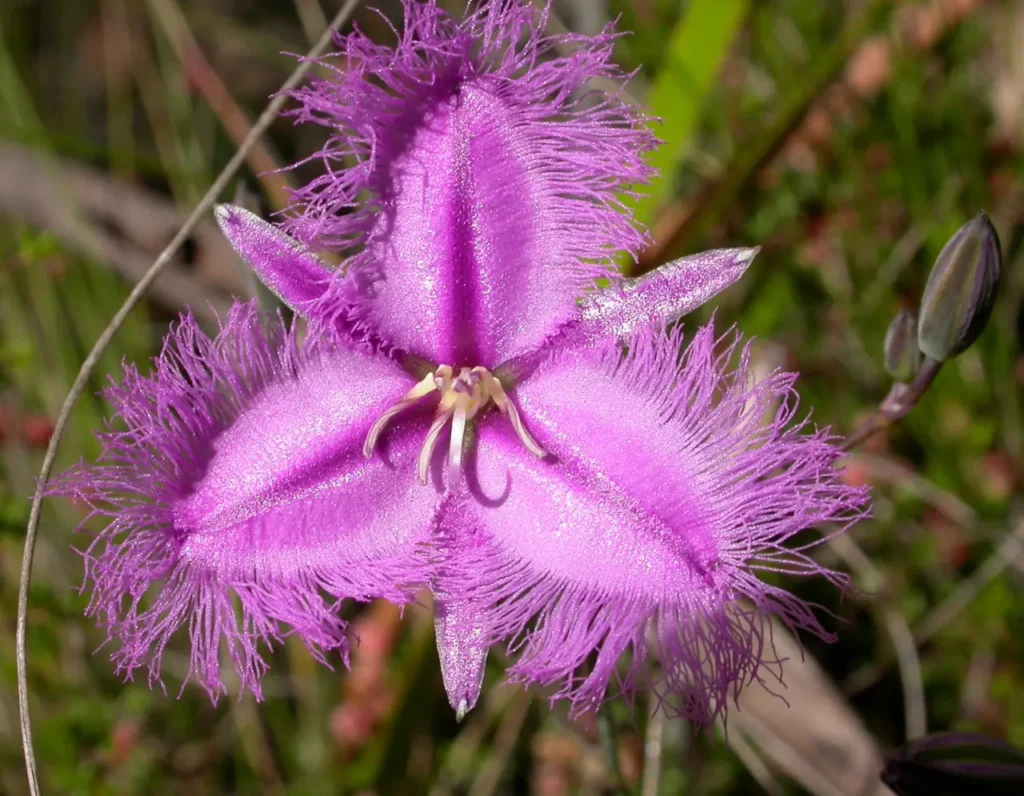
Cultural Significance and Conservation
The Fringed Lily holds significance within the context of indigenous Australian cultures. It has been used traditionally for various purposes, including as a food source for Indigenous people, who roasted and consumed the tubers. Additionally, the plant’s flowering period signaled the arrival of warmer weather and the availability of other food resources, marking a significant time in the seasonal cycle.
In terms of conservation, Thysanotus Tuberosus is considered of least concern in terms of threat levels. However, like many native species, its preservation relies on protecting its natural habitats from urbanization, land clearing, and other forms of human impact.
Appreciating Nature’s Beauty
The Fringed Lily’s delicate petals and unique growth habit remind us of the incredible diversity and adaptability of plant life. Its presence in its natural habitat offers a reminder of the intricate relationships that exist within ecosystems and the vital role each species plays.
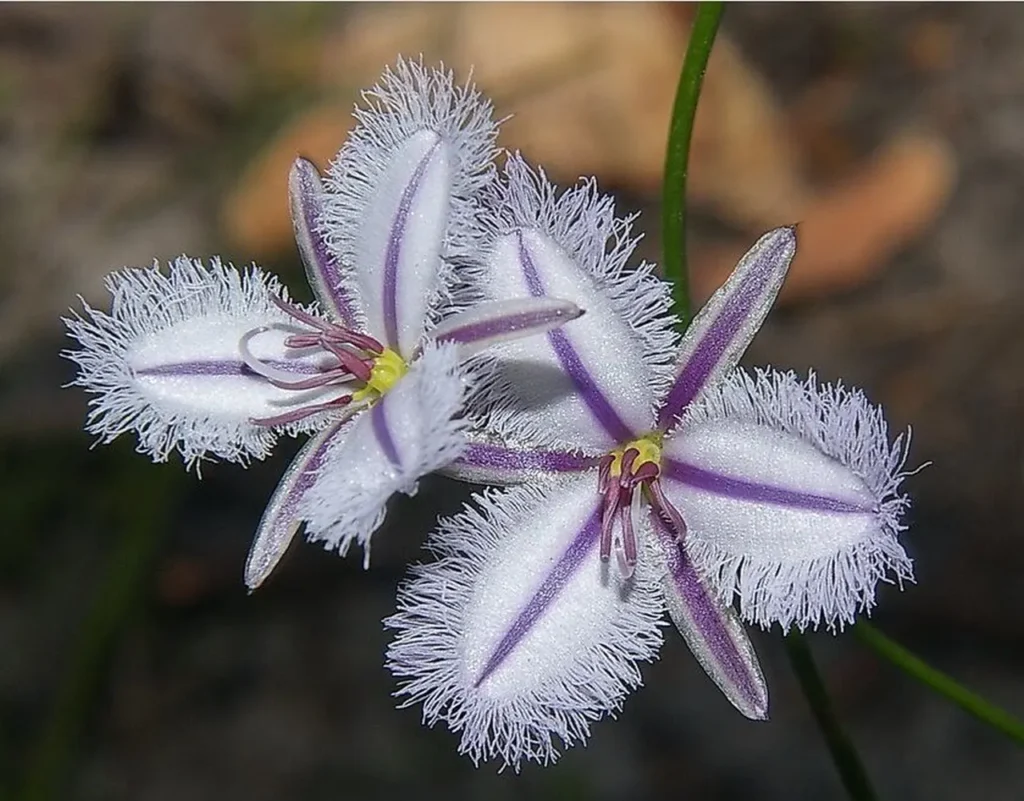
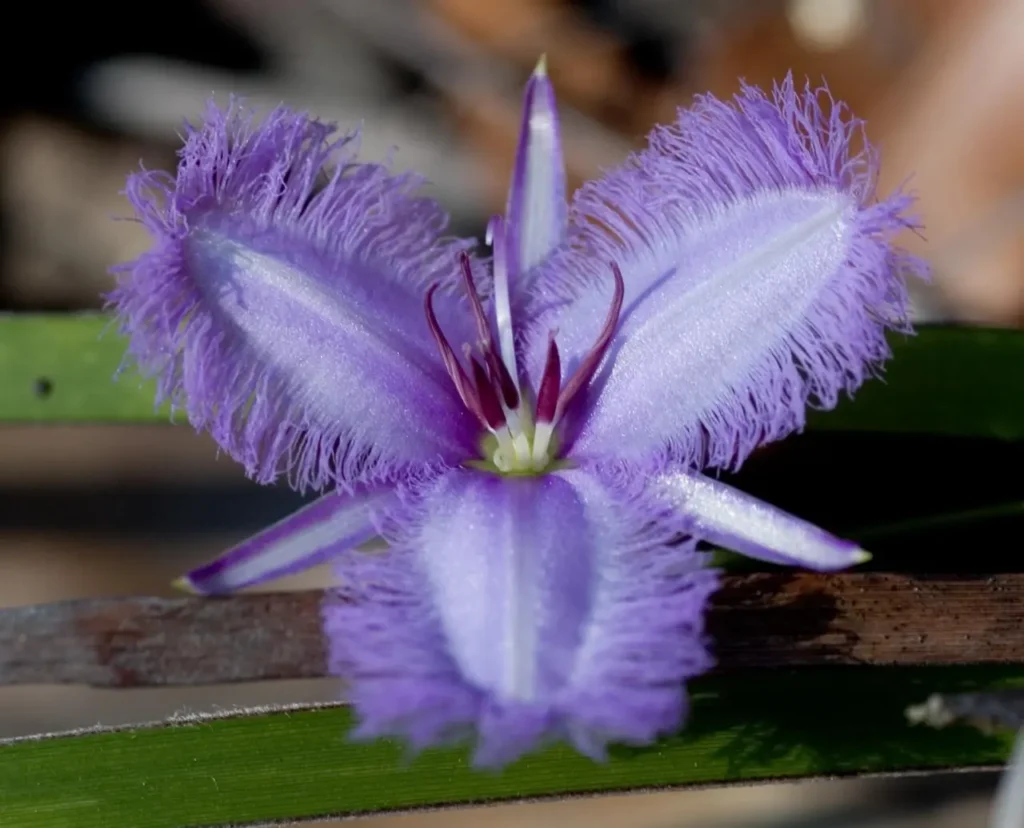
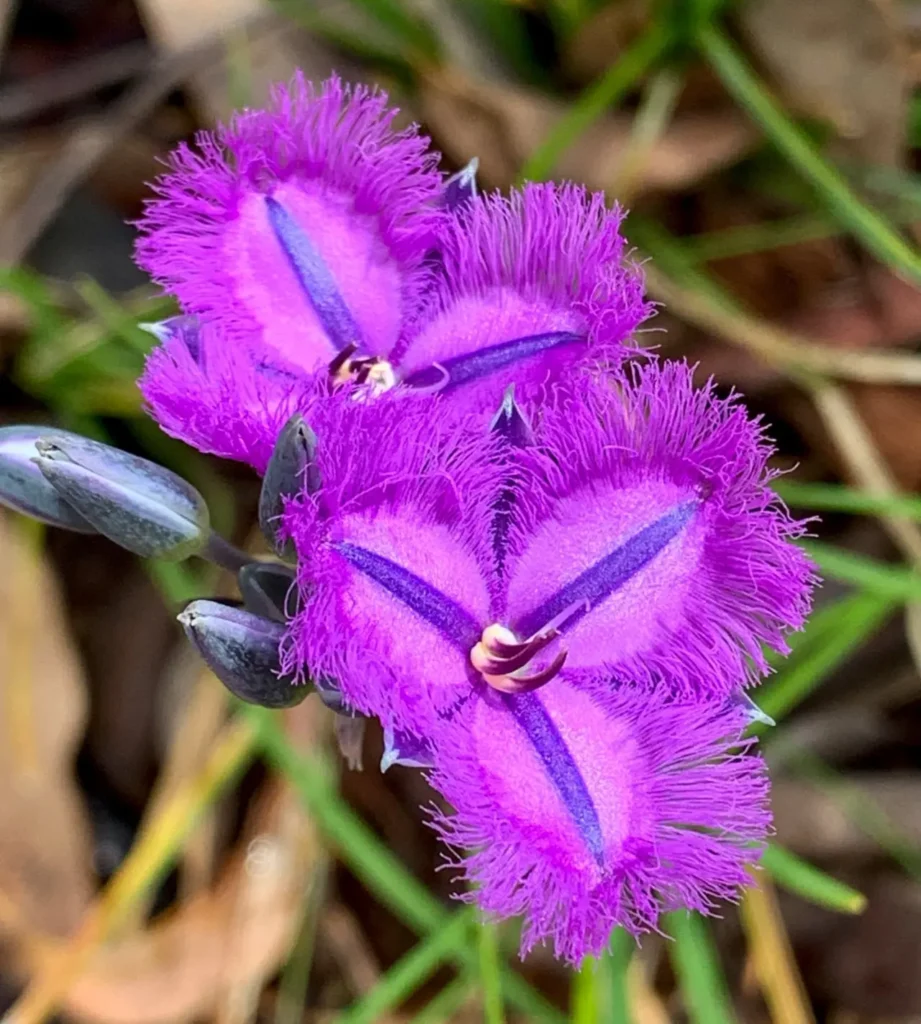
Thysanotus Tuberosus, known as the Fringed Lily or Twining Fringe Lily, enchants us with its delicate beauty and intricate floral structure. As it twines and spirals its way through Australian landscapes, it invites us to marvel at the elegance and resilience of nature. This wildflower serves as a gentle reminder of the hidden wonders that exist within the plant kingdom and the importance of preserving these treasures for future generations to appreciate and cherish.








